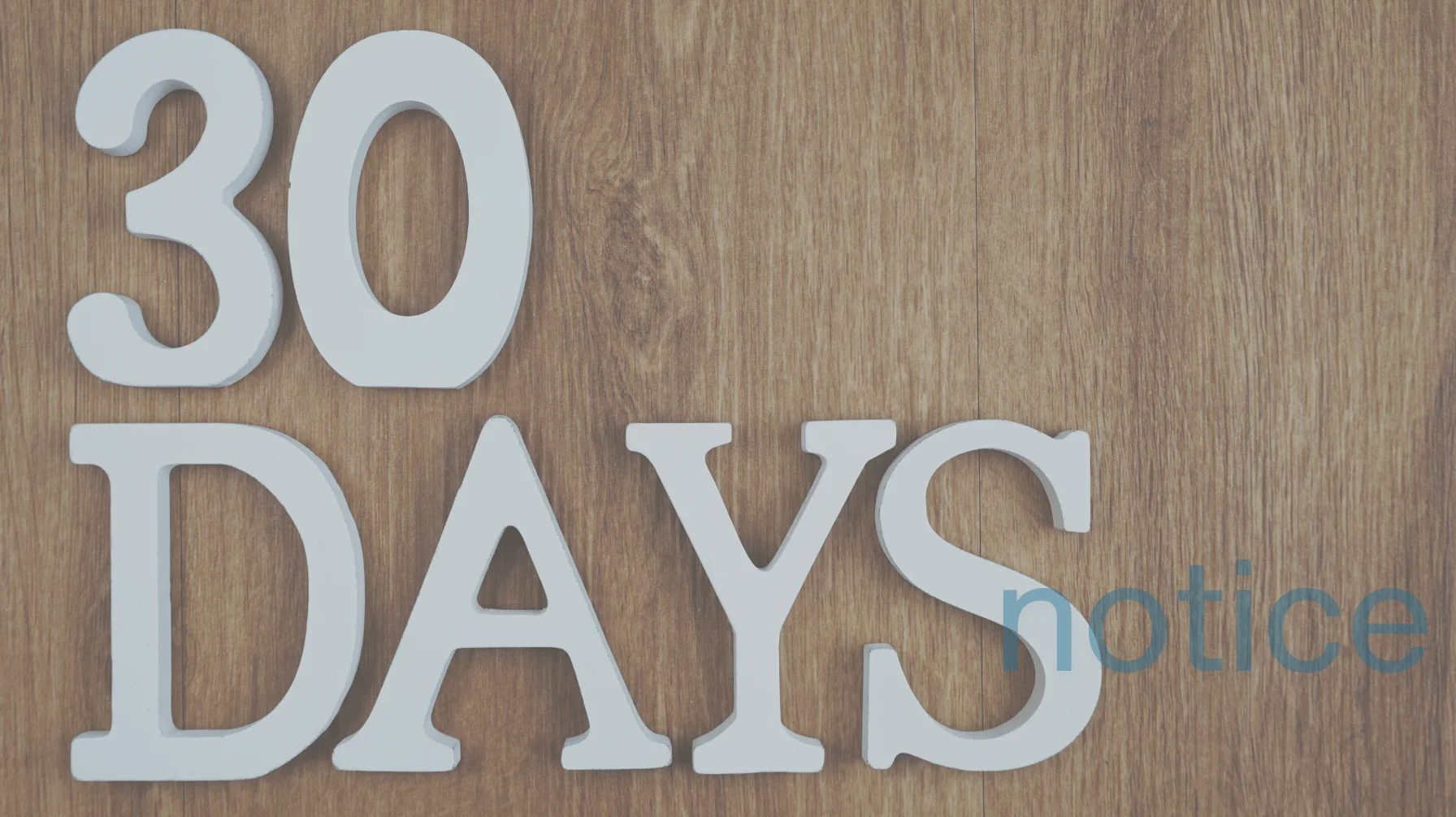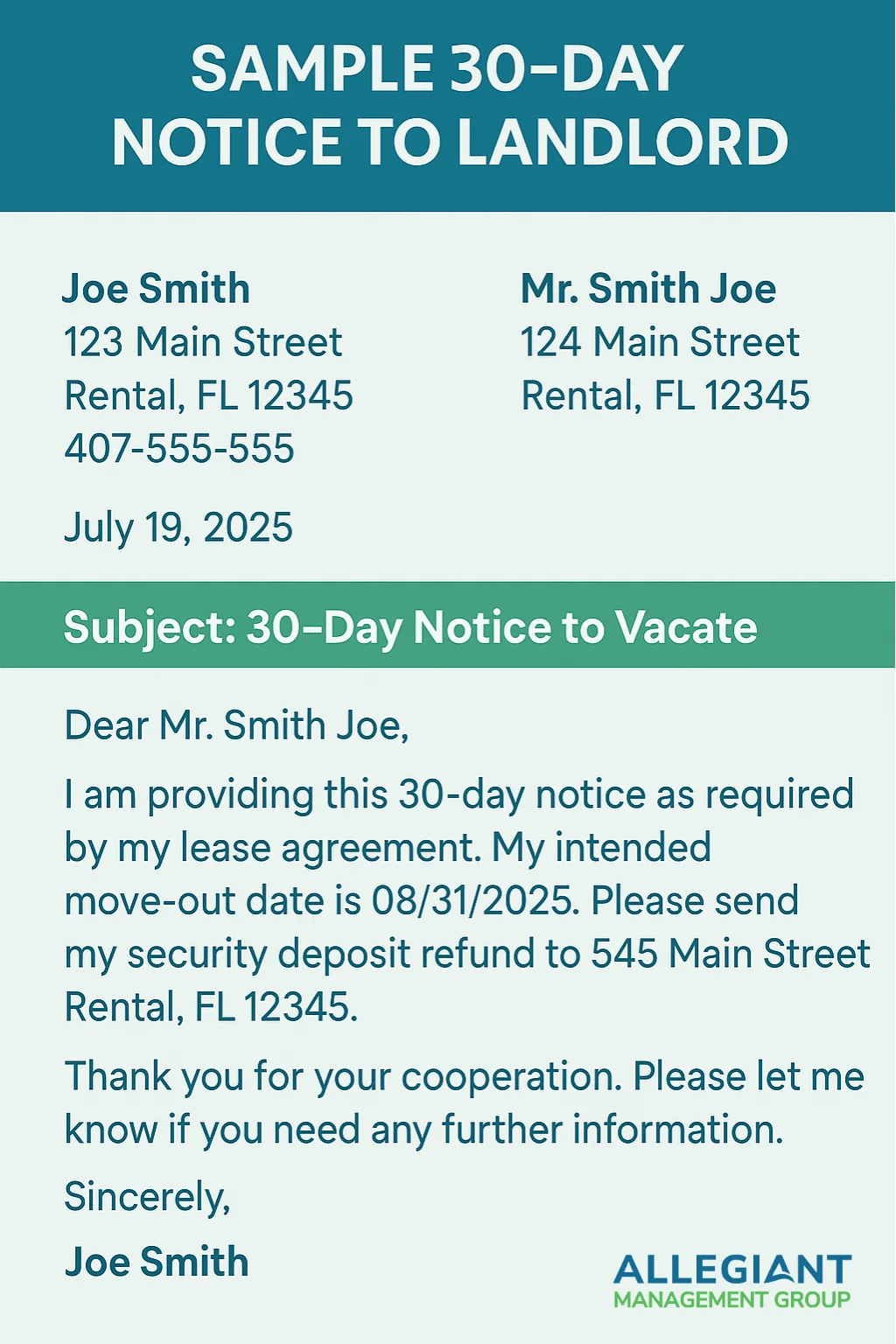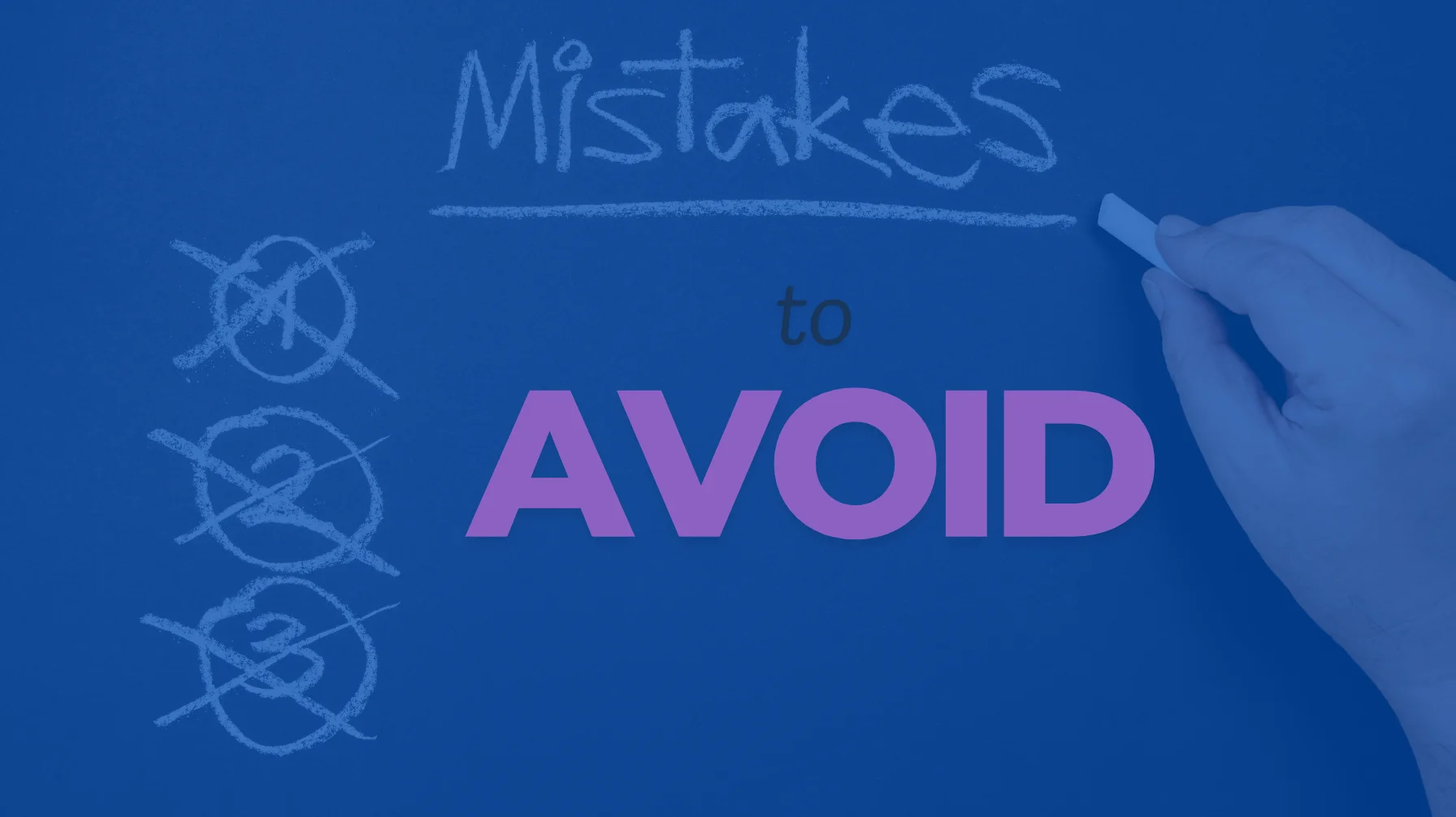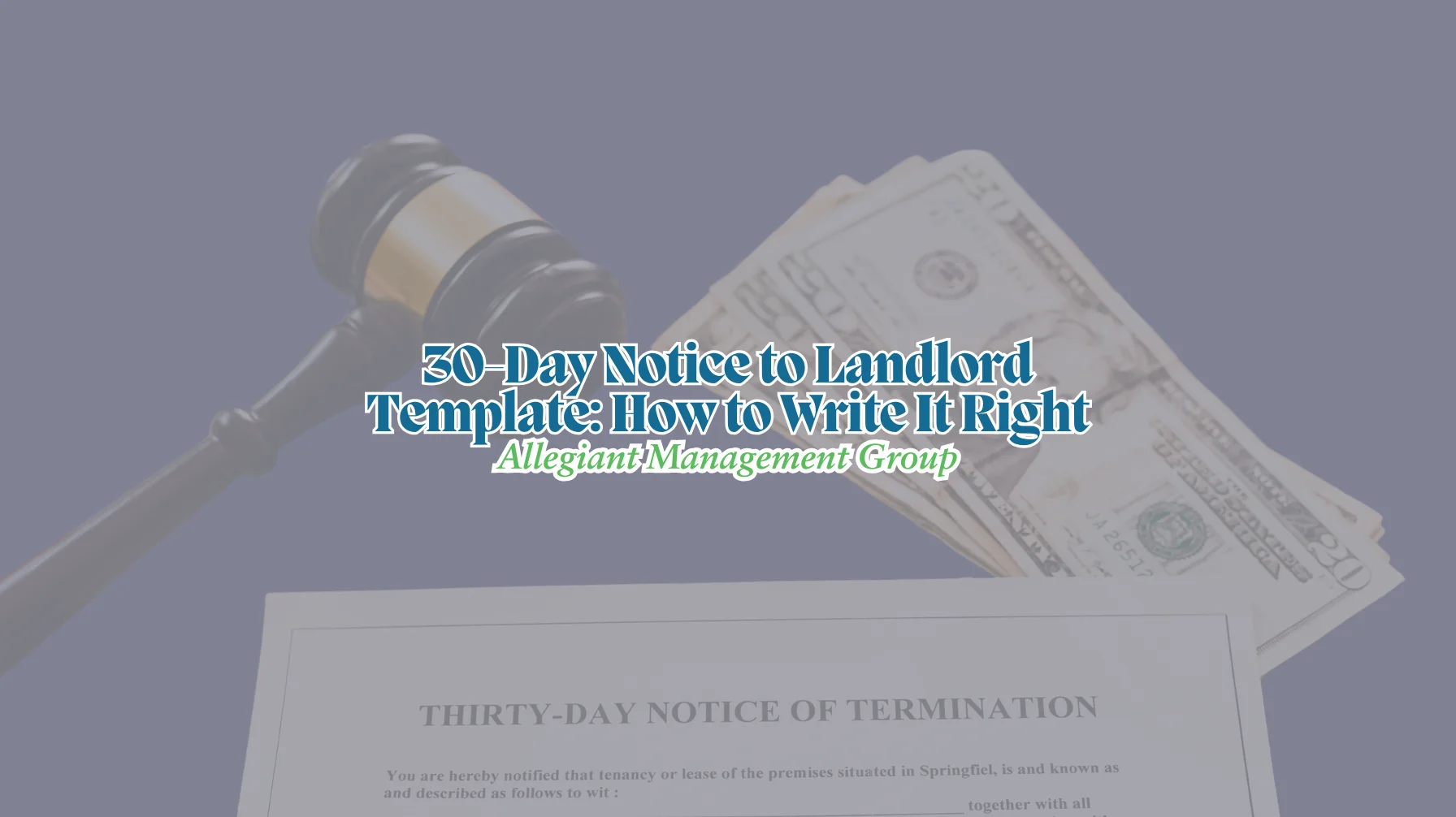Last Updated: September 15, 2025
📌 Table of Contents
- What Is a 30-Day Notice to Vacate?
- Legal Requirements
- How to Write a 30-Day Notice to Landlord
- Sample 30-Day Notice to Landlord
- Common Mistakes to Avoid
- Final Tips
- Frequently Asked Questions (FAQs)
30-Day Notice to Landlord Template: How to Write a 30-Day Notice in 2025
A 30-day notice to vacate letter is a formal letter or document informing your landlord or property manager of your intent to leave the rental property. Also know as a lease termination letter. It ensures a smooth transition for both parties, allowing landlords time to find new tenants and tenants to move out without issues or without breaking your lease early.

What Is a 30-Day Notice to Vacate?
A 30-days notice is a written statement from the tenant to the landlord stating their move-out date. Most leases require this notice, and failing to provide it can result in penalties or loss of a security deposit. This is a formal way to end a rental agreement.
Legal Requirements for Proper Notice
Laws vary by state, but common requirements include:
✔ Written notice – Verbal notices are typically not valid.
✔ Clear move-out date – Specify the exact day you’ll vacate.
✔ Delivery method – Certified mail or in-person delivery with a witness is recommended.
✔ Lease terms – Some agreements require more than 30 days’ notice, so review your lease for adequate notice.

How to Write a 30-Day Notice to Landlord
To write an effective notice, include:
✅ Date of notice – The day you submit the letter.
✅ Your information – Full name and rental property address.
✅ Landlord details – Their name and mailing address.
✅ Move-out date – Exact last day of occupancy.
✅ Forwarding address – Address where they are to return your security deposit.
✅ Signature – To validate the notice.
Sample 30-Day Notice to Landlord
This is a simple 30 day notice to landlord sample you can use for the State of Florida. This sample is for information only.
[Your Name]
[Your Address]
[City, State, ZIP]
[Your Phone Number]
[Date]
[Landlord’s Name]
[Landlord’s Address]
[City, State, ZIP]
Subject: 30-Day Notice to Vacate
Dear [Landlord’s Name],
I am providing this 30-day notice as required by my lease agreement. My intended move-out date is [Move-Out Date]. Please send my security deposit refund to [Forwarding Address].
Thank you for your cooperation. Please let me know if you need any further information.
Sincerely,
[Your Name]

Common Mistakes to Avoid When Giving Notice to Landlord
🚫 Vague move-out dates – Always specify the exact day.
🚫 Missing forwarding address – This can delay deposit refunds.
🚫 Failure to review the lease – Ensure compliance with lease terms.
🚫 Lack of proof of notice – Keep copies of the letter and proof of delivery.

Final Tips
•Communicate with your landlord to ensure a smooth transition.
•Schedule a move-out inspection to address any concerns.
•Take photos of the unit before leaving for documentation.
By following these steps, you’ll protect your rights and leave on good terms with your landlord.
Need help with your rental transition? Contact Allegiant Management Group for expert guidance on lease compliance and smooth move-outs. Connect with us today!
Frequently Asked Questions (FAQs)
What is a 30-day notice to vacate?
A 30-day notice to vacate is a written statement from a tenant or landlord ending a month-to-month lease. It gives the other party 30 days to prepare for move-out or possession change.
Is a 30-day notice legally required?
Yes, a 30-day notice is legally required for month-to-month leases in most states. It gives both parties time to prepare. Fixed-term leases may not require notice unless specified in the contract.
What happens if I don’t give a 30-day notice?
Failing to give a 30-day notice may result in extra rent charges, loss of your security deposit, or legal action. Landlords can hold you liable for unpaid rent until proper notice is given.
Can my landlord refuse my 30-day notice?
A landlord can’t refuse a valid 30-day notice if you’re on a month-to-month lease. However, fixed-term leases may require you to stay until the end unless both parties agree otherwise.
Will I get my security deposit back after moving out?
You’ll get your security deposit back if you meet lease terms, clean the unit, and cause no damage beyond normal wear. Landlords must return it, usually within 15–30 days, or provide an itemized deduction list.
Do I need to clean my rental unit before moving out?
Yes, tenants must clean the rental before moving out. Most leases require returning the unit in move-in condition, minus normal wear. Deep clean kitchens, bathrooms, floors, and remove all trash to avoid deposit deductions.
Can I give a shorter or longer notice?
You can give a longer notice, but shorter notice depends on your lease terms and local laws. Landlords may allow less than 30 days, but written consent is essential to avoid penalties.
What should I include in my 30-day notice?
Include your name, address, date, landlord’s name, move-out date, and a clear statement ending the lease. Add forwarding address, request for deposit return, and your signature. Keep a copy for records.
When does the 30-day period start?
The 30-day notice period starts the day the landlord receives your written notice, not when you send it. Delivery method—mail, email, or hand delivery—can affect the start date.
Disclaimer: This blog is for information purposes only and does not constitute legal advice. Rental laws vary by location, so review your lease and consult a legal professional for specific guidance.



